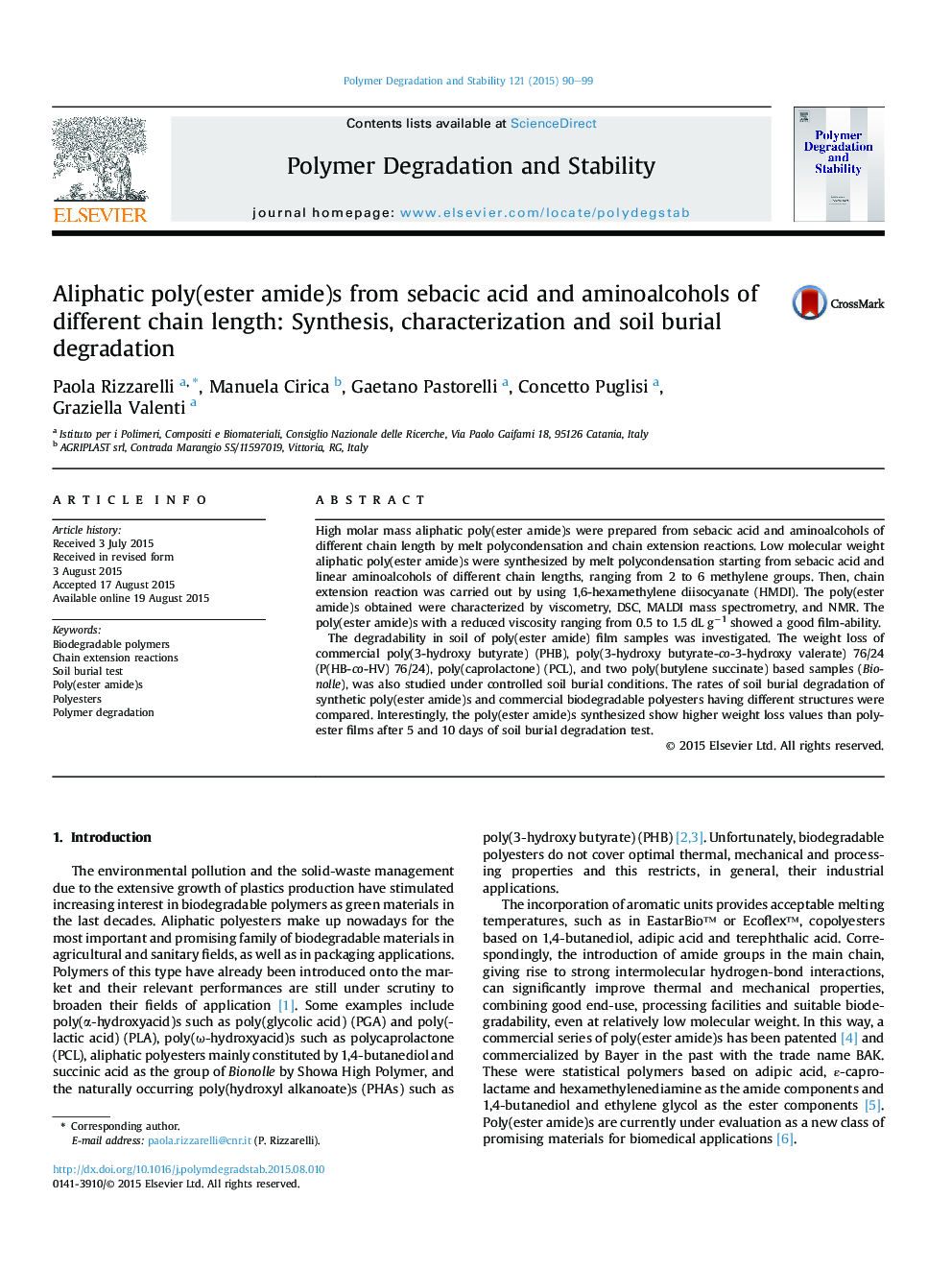| Article ID | Journal | Published Year | Pages | File Type |
|---|---|---|---|---|
| 5201369 | Polymer Degradation and Stability | 2015 | 10 Pages |
High molar mass aliphatic poly(ester amide)s were prepared from sebacic acid and aminoalcohols of different chain length by melt polycondensation and chain extension reactions. Low molecular weight aliphatic poly(ester amide)s were synthesized by melt polycondensation starting from sebacic acid and linear aminoalcohols of different chain lengths, ranging from 2 to 6 methylene groups. Then, chain extension reaction was carried out by using 1,6-hexamethylene diisocyanate (HMDI). The poly(ester amide)s obtained were characterized by viscometry, DSC, MALDI mass spectrometry, and NMR. The poly(ester amide)s with a reduced viscosity ranging from 0.5 to 1.5Â dLÂ gâ1 showed a good film-ability.The degradability in soil of poly(ester amide) film samples was investigated. The weight loss of commercial poly(3-hydroxy butyrate) (PHB), poly(3-hydroxy butyrate-co-3-hydroxy valerate) 76/24 (P(HB-co-HV) 76/24), poly(caprolactone) (PCL), and two poly(butylene succinate) based samples (Bionolle), was also studied under controlled soil burial conditions. The rates of soil burial degradation of synthetic poly(ester amide)s and commercial biodegradable polyesters having different structures were compared. Interestingly, the poly(ester amide)s synthesized show higher weight loss values than polyester films after 5 and 10 days of soil burial degradation test.
